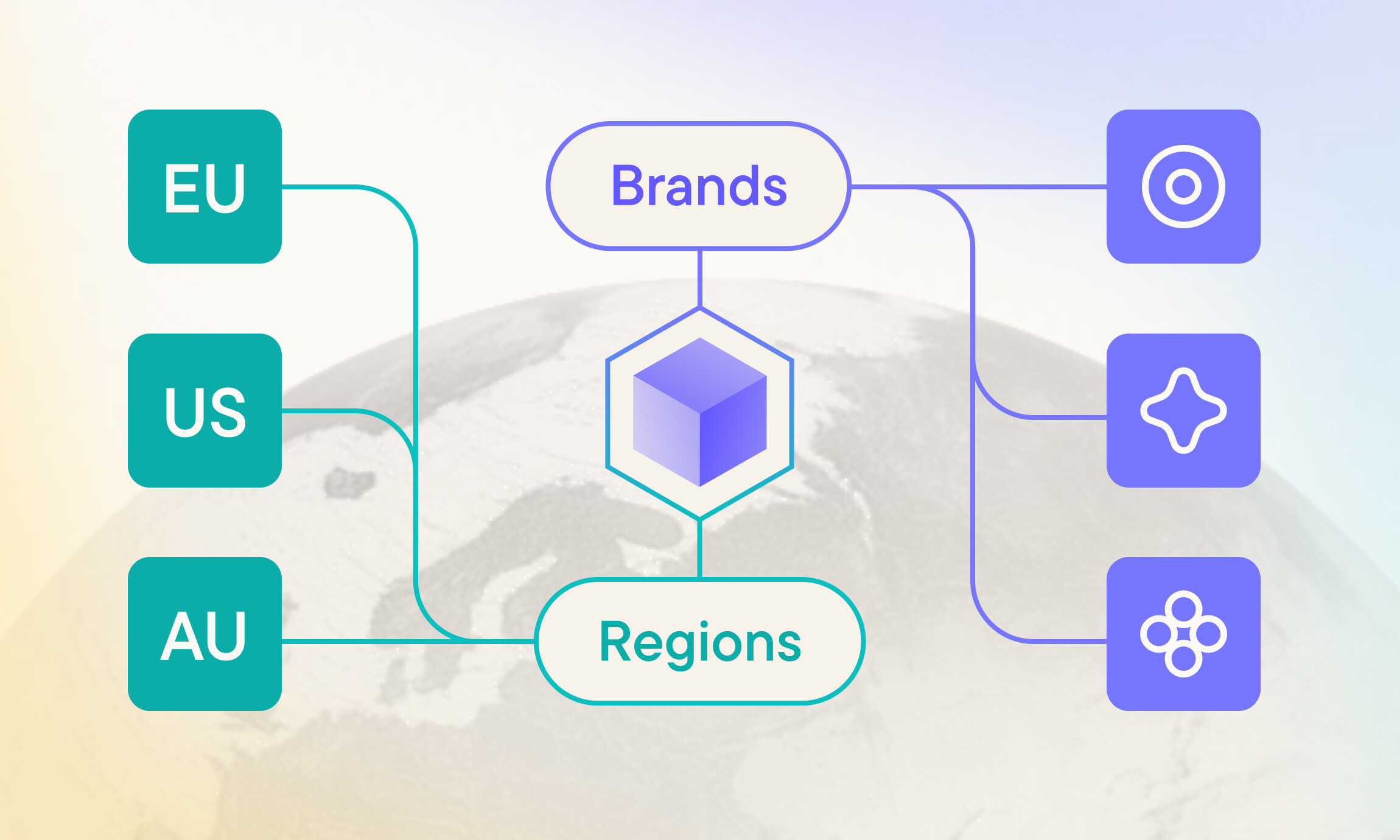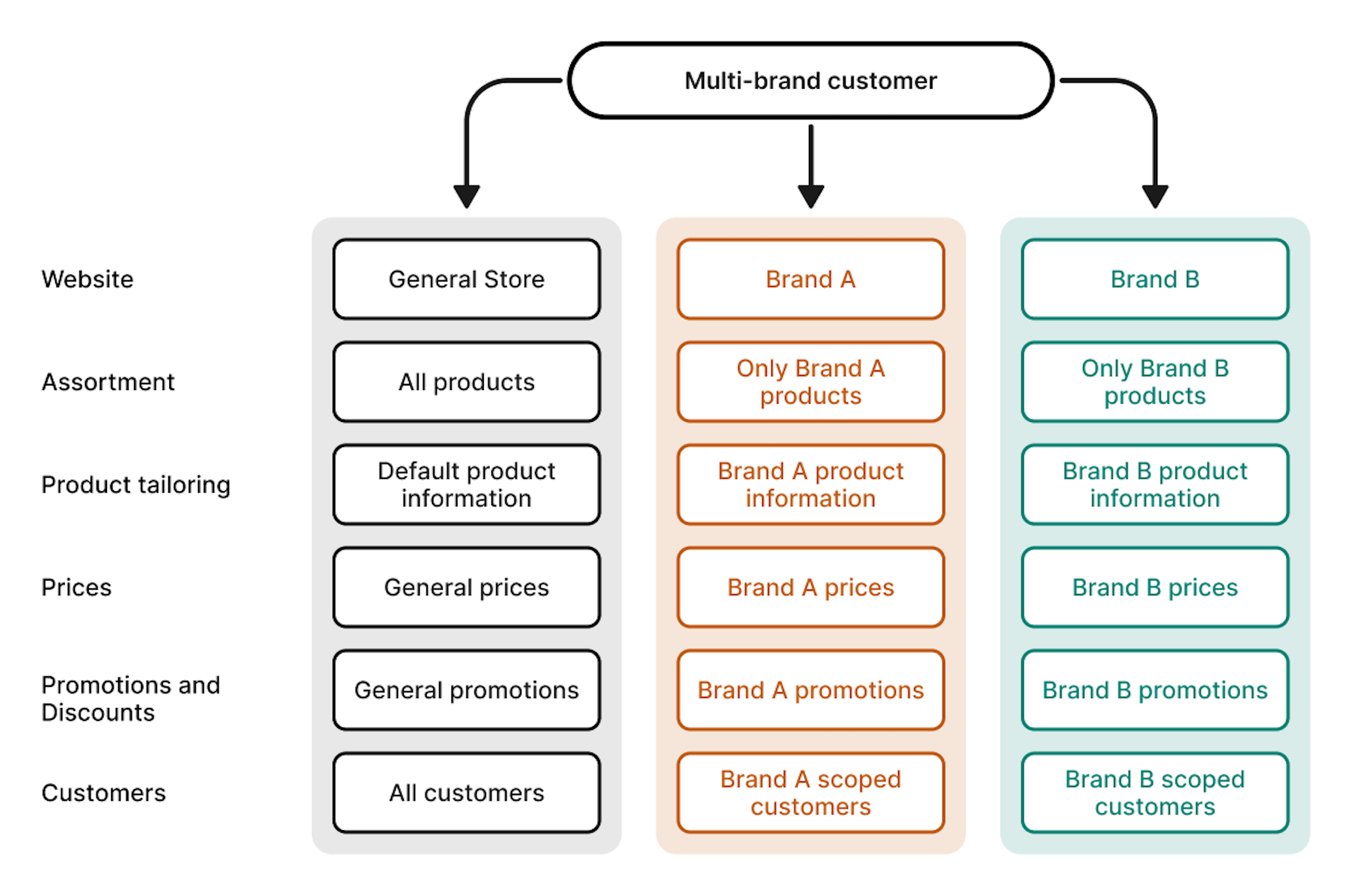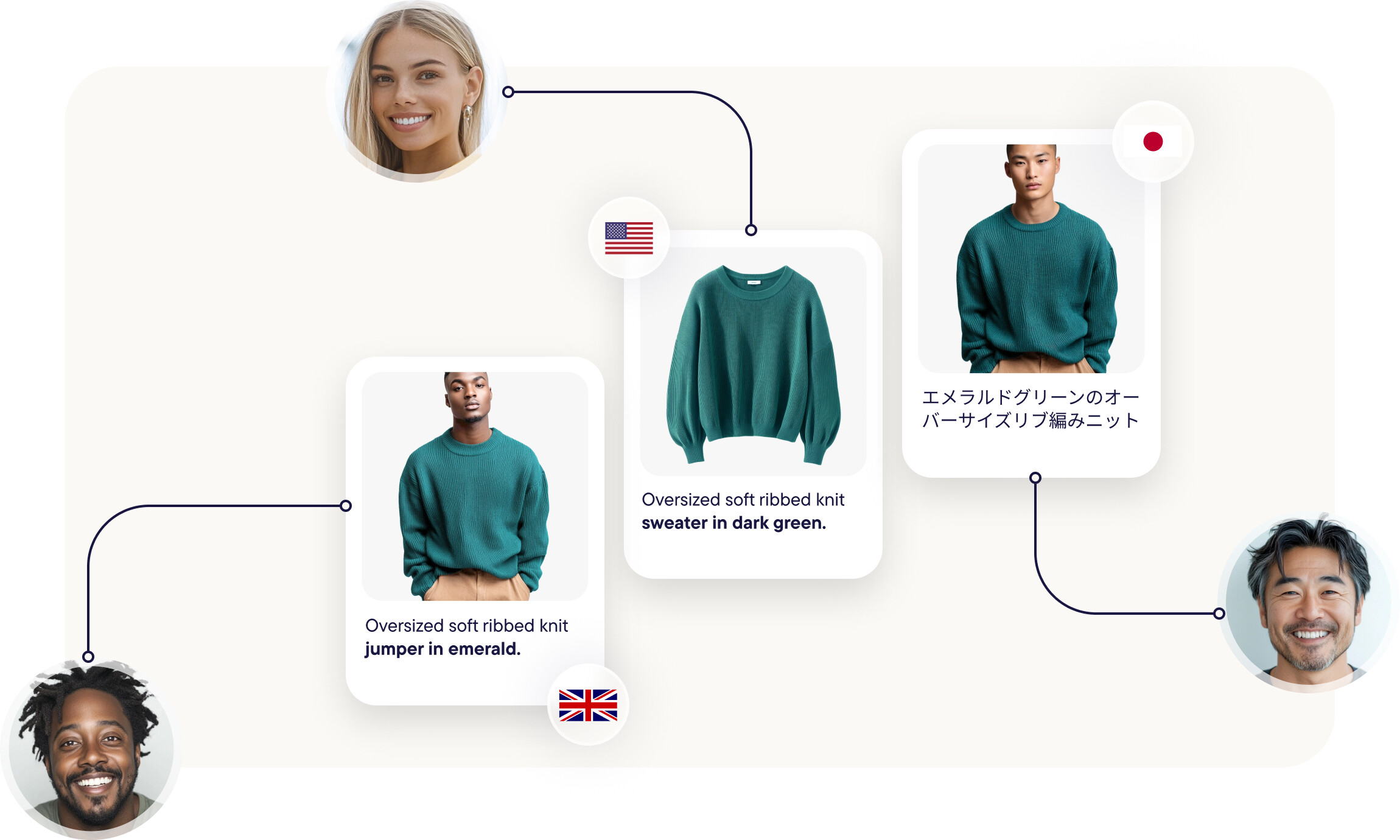
Is your business expanding internationally and managing several brands? Or perhaps you’re looking into new business models as a route for growth? Discover how commercetools helps enterprises manage multiple brands, stores, countries, channels and business models in one place with our omnichannel and internationalization capabilities — so you can multiply your growth.

The challenge of managing the “multi-everything” approach
Whenever and wherever your business grows — expanding internationally, adding new channels, managing various brands and stores — the complexity of managing it all often becomes overwhelming. It’s common that enterprises choose to work with technology that serves specific demands, such as managing specific countries or brands, so they can meet key customer expectations and/or fulfill business goals in the short term.
However, what usually happens is a fragmented technology environment that hinders enterprises from leveraging synergies across countries, brands, stores, channels and more. For example, the in-store and eCommerce presence hasn’t always translated into seamless customer experiences, with each of these footprints having its own commerce engine, disconnected from one another. The same can be said about companies operating across multiple countries; it’s common to use different platforms for each locale.
The result is clear: A scattered IT landscape in which brands encounter inconsistencies in product, pricing, customer and inventory data management that negatively affect the customer experience. They also incur a higher TCO (total cost of ownership) with distinct licensing fees and integration costs, bloating tech spending unnecessarily.
Delivering a seamless customer experience across brands, regions and business models is a significant challenge. Localization, pricing strategies, taxation and even checkout processes must be adapted to different markets. When managing various brands under one roof, it’s vital that each can present its specific branding, products and customer experiences.
More than ever, brands and retailers need a versatile solution that enables them to manage multiple brands, countries, channels and more on a unified commerce platform.
Leveraging omnichannel and internationalization with commercetools
For enterprises that want to grow without growing pains, the omnichannel and internationalization capabilities powered by commercetools B2C Commerce provide a holistic approach to managing multiple countries, brands, stores, channels and business models at scale.
Unlike traditional commerce platforms that require separate instances for each region or brand, commercetools allows enterprises to operate all their stores from a single instance. This flexibility ensures consistency while enabling deep customization where needed.
At the heart of commercetools’ ability to support this “multi-everything” approach is Store Modeling.
The commercetools system is built around the concept of stores and channels, allowing enterprises to differentiate their frontend experiences while operating on a unified commerce backend. This flexible approach enables organizations to define what a “store” represents — whether it’s a collection of physical locations, an online storefront or different business lines — and manage everything in a single project instance.

A single commercetools project can support multiple languages and currencies, providing a scalable and global solution. The platform doesn’t impose restrictions, giving businesses full control over their configurations. Your company can maintain one master catalog while customizing each store to display only relevant products, along with its own inventory, pricing and customer data. With advanced segmentation capabilities, your business can model its structure once and apply it selectively across brands based on their specific needs.
This feature allows businesses to structure their commerce data to support various use cases, including multiple brands, retail and digital stores, as well as omnichannel strategies.
What’s inside omnichannel and internationalization
Whether expanding into new markets or scaling globally, commercetools empowers businesses to deliver consistent and personalized experiences across any device or platform. Our omnichannel and internationalization capabilities enable seamless management of multiple business lines, ensuring a smooth and cohesive customer journey, regardless of location or touchpoint.
commercetools enables businesses to manage B2C, B2B, D2C operations — and everything in between — from a unified platform, streamlining operations across multiple business models.
Share resources, such as product catalogs, channels or assortments, as needed to simplify selling across physical and online stores. For digital stores (website or mobile), consider creating customer segments (store-specific or global) aligned with your Store structure or other business prerequisites.
In addition, commercetools B2C Commerce can integrate with your in-store POS system to provide a seamless shopping experience for customers visiting your brick-and-mortar store. Alternatively, for a truly unified experience, you can bring all the benefits of commercetools B2C Commerce into your brick-and-mortar store with a single platform and data set powered by commercetools InStore.
Retailers managing multiple brands can differentiate their product offerings with tailored branding, assortment and pricing rules. This separation between Stores across multiple brands enables your business to maintain distinct brand identities and cater to the needs of each brand.
Expanding internationally? commercetools makes it easy to localize product catalogs, checkout experiences, pricing structures and customer interactions based on specific markets.

In addition, you can create stores for each storefront, which can cater to specific countries or regions and offer localized content, products, pricing, carts, etc.
Configure different currencies, languages, tax rates and payment methods.
Implement region-specific promotions and product variations.
Tailor pricing by country, customer groups and timeframes.
What’s more, leverage commercetools’ internationalization (i18n) and localization (l10n) features to tailor your commerce platform for different languages, currencies, date formats and regional preferences. Ensure that product descriptions, prices and other content are translated and configured to provide a seamless experience for each market.
Enable customers to add items to their carts from one device and complete checkout on another without losing their selections — ensuring a seamless omnichannel experience.
Tailoring commerce experiences with customization features
To truly tailor commerce experiences for different brands and regions, commercetools offers a range of customization features, including:
Managing omnichannel and internationalization on the commercetools Merchant Center
The Merchant Center is commercetools’ powerful business user interface designed to simplify day-to-day operations. With its intuitive management tools, you can manage multiple storefronts, regions and brands from a single dashboard. Plus, you can organize operations using Projects and Organizations, grouping related stores under a larger entity.
You can configure Stores directly on the Merchant Center; for example, you can limit the data available in your Store that automatically filters your Product data before sending it to the storefront application. This ensures that, even though your product data is managed centrally, specific Stores can retrieve only the data they need for a seamless customer experience. Furthermore, you can configure languages for country-specific stores, as well as filter prices according to country/region.
The most versatile commerce platform — no matter where you’re headed next
Scaling a multi-brand, multi-region commerce business doesn’t have to mean added complexity. With commercetools B2C Commerce, enterprises can streamline operations, enhance customer experiences and expand into new markets effortlessly.
With the power of Store Modeling, internationalization tools and omnichannel support — all managed through the Merchant Center — businesses can achieve seamless commerce experiences across brands and regions from a single, flexible commerce instance.
Companies worldwide are leveraging commercetools’ internationalization and omnichannel capabilities to optimize their operations and drive global success:
Breville efficiently manages multiple brands under one platform while leveraging commercetools' internationalization features to support operations across multiple countries. The kitchen appliance leader implemented 80 regional sites since adopting commercetools.
Emma – The Sleep Company uses commercetools to power its international growth, enabling seamless expansion into new markets with localized experiences.
Bang & Olufsen (B&O) benefits from commercetools’ modular architecture to manage its premium audio and electronics products across different markets and brands. The high-end electronics brand implemented over 28 webstores using commercetools.
APG & Co. enhances its fashion retail presence by integrating commercetools into its omnichannel strategy, delivering a seamless customer journey across digital and physical stores. The Australian fashion group implemented three brands in two countries — and reduced operational technical support time by 60%.
Jaycar bridges the gap between online and in-store shopping, ensuring a unified experience for customers across channels.
Whether through internationalization, omnichannel capabilities or multi-brand management, commercetools remains at the forefront of modern commerce solutions — helping businesses grow without unnecessary complexity.
